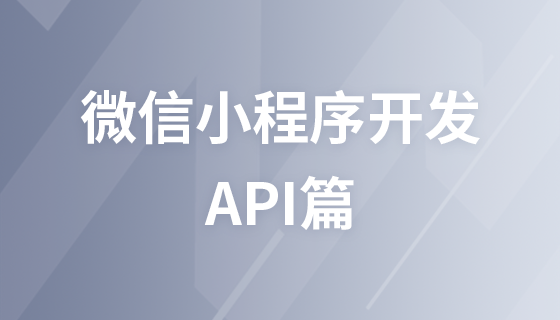近年来,随着互联网技术的迅猛发展,服务器端的高性能、高并发和高可用性要求越来越高,而netty作为一个高性能、异步无阻塞的网络通信框架,越来越受到广大开发者的关注和使用。
本文将介绍如何利用Netty框架实现一个高性能的API服务器。
一、什么是Netty
Netty是一个基于Java NIO的异步事件驱动的网络应用框架,用以快速开发高性能、高可靠性的网络通信程序,比如客户端和服务器端。
它的核心组件包括Buffer、Channel、EventLoop、Codec等。Buffer是Netty的缓冲区组件,Channel是提供了抽象的网络通信接口,EventLoop是Netty的事件驱动模型,Codec是编解码器。通过这些组件,Netty框架可以提供高性能、高并发、低延迟的网络通信能力。
立即学习“Java免费学习笔记(深入)”;
二、Netty的基本使用
首先,我们需要引入Netty的依赖:
<dependency>
<groupId>io.netty</groupId>
<artifactId>netty-all</artifactId>
<version>4.1.42.Final</version>
</dependency>然后,我们需要创建一个Bootstrap对象,通过这个对象来启动我们的Netty服务器:
EventLoopGroup bossGroup = new NioEventLoopGroup();
EventLoopGroup workerGroup = new NioEventLoopGroup();
try{
ServerBootstrap bootstrap = new ServerBootstrap();
bootstrap.group(bossGroup, workerGroup)
.channel(NioServerSocketChannel.class)
.childHandler(new ChannelInitializer<SocketChannel>() {
@Override
public void initChannel(SocketChannel ch) throws Exception {
ChannelPipeline pipeline = ch.pipeline();
pipeline.addLast(new HttpServerCodec());
pipeline.addLast(new HttpObjectAggregator(65536));
pipeline.addLast(new ChunkedWriteHandler());
pipeline.addLast(new HttpServerHandler());
}
});
ChannelFuture future = bootstrap.bind(port).sync();
future.channel().closeFuture().sync();
}finally{
bossGroup.shutdownGracefully();
workerGroup.shutdownGracefully();
}在上面的代码中,我们创建了两个EventLoopGroup对象,一个用来接收客户端请求的bossGroup,一个用来处理客户端请求的workerGroup。通过ServerBootstrap对象来配置Netty服务器的参数,包括通信的协议(NioServerSocketChannel),处理器(Handler),以及Channel的初始化等操作。
我们还可以看到,在上面的代码中,我们添加了HttpServerCodec和HttpObjectAggregator组件,来实现对HTTP请求和响应的编解码和聚合。同时,我们还添加了ChunkedWriteHandler,来实现对大数据流的处理。
最后,我们通过bootstrap.bind方法绑定端口并启动Netty服务器,通过future.channel().closeFuture().sync()方法来阻塞主线程并等待Netty服务器关闭。
三、使用Netty实现高性能API服务器
对于一个API服务器,我们通常需要处理大量的请求和响应,同时保证系统的可用性和高性能的响应时间。
在这里,我们以实现一个简单的API服务器为例,来介绍如何使用Netty框架实现一个高性能的API服务器。
1、接口定义
我们先来定义一个简单的API接口,这个接口用来实现获取用户信息的功能:
GET /user/{id} HTTP/1.1
Host: localhost:8888其中{id}是用户的ID号,我们需要根据这个ID号来查询用户信息并返回给客户端。
2、业务处理
接下来,我们需要实现业务逻辑处理,即根据客户端请求中的ID号来查询用户信息,并将查询结果返回给客户端。

mallcloud商城基于SpringBoot2.x、SpringCloud和SpringCloudAlibaba并采用前后端分离vue的企业级微服务敏捷开发系统架构。并引入组件化的思想实现高内聚低耦合,项目代码简洁注释丰富上手容易,适合学习和企业中使用。真正实现了基于RBAC、jwt和oauth2的无状态统一权限认证的解决方案,面向互联网设计同时适合B端和C端用户,支持CI/CD多环境部署,并提
 0
0

首先,我们来创建一个处理器HttpServerHandler,这个处理器继承自SimpleChannelInboundHandler,我们可以在这个处理器中实现我们的业务逻辑。
public class HttpServerHandler extends SimpleChannelInboundHandler<FullHttpRequest> {
@Override
protected void channelRead0(ChannelHandlerContext ctx, FullHttpRequest msg) throws Exception {
HttpServerRoute route = HttpServerRoute.builder()
.addRoute("/user/{id}", new GetUserHandler())
.build();
HttpServerRequest request = new HttpServerRequest(msg);
HttpServerResponse response = new HttpServerResponse(ctx, msg);
route.route(request, response);
}
}可以看到,在上面的代码中,我们通过HttpServerRoute对象来实现路由匹配。当接收到客户端请求时,我们会将请求转为HttpServerRequest对象,并将响应对象HttpServerResponse包装在内,再通过HttpServerRoute对象来匹配路由规则,并将请求分发给对应的处理器进行处理。
我们需要实现GetUserHandler处理器,这个处理器用来根据用户ID查询用户信息:
public class GetUserHandler implements HttpServerHandlerInterface {
@Override
public void handle(HttpServerRequest request, HttpServerResponse response) throws Exception {
String id = request.getPathParam("id");
//查询用户信息
User user = UserService.getUserById(id);
if (user != null) {
JSONObject json = new JSONObject();
json.put("id", user.getId());
json.put("name", user.getName());
response.sendJSON(HttpResponseStatus.OK, json.toJSONString());
} else {
response.sendError(HttpResponseStatus.NOT_FOUND);
}
}
}在上面的代码中,我们将根据请求中的ID号查询用户信息,并通过JSONObject来构建请求响应的JSON字符串数据,最后将查询结果返回给客户端。
我们还需要实现UserService类,来提供查询用户信息的功能:
public class UserService {
public static User getUserById(String id) {
//查询数据库中的用户信息
}
}3、性能测试
最后,我们来测试一下我们实现的Netty高性能API服务器的响应时间和QPS(每秒钟并发请求数量)。
通过Apache ab工具,我们可以模拟多个客户端并发请求,并统计响应时间和QPS信息。使用如下命令:
ab -n 10000 -c 100 -k http://localhost:8888/user/1
参数说明:
-n:表示总请求数量
-c:表示并发请求数量
-k:表示启用Keep-alive连接
通过测试,我们可以得到响应时间和QPS信息:
Server Software:
Server Hostname: localhost
Server Port: 8888
Document Path: /user/1
Document Length: 36 bytes
Concurrency Level: 100
Time taken for tests: 3.777 seconds
Complete requests: 10000
Failed requests: 0
Keep-Alive requests: 10000
Total transferred: 1460000 bytes
HTML transferred: 360000 bytes
Requests per second: 2647.65 [#/sec] (mean)
Time per request: 37.771 [ms] (mean)
Time per request: 0.378 [ms] (mean, across all concurrent requests)
Transfer rate: 377.12 [Kbytes/sec] received
Connection Times (ms)
min mean[+/-sd] median max
Connect: 0 2 1.2 2 10
Processing: 3 32 11.3 32 84
Waiting: 3 32 11.3 32 84
Total: 6 34 11.2 34 86
Percentage of the requests served within a certain time (ms)
50% 34
66% 38
75% 40
80% 42
90% 49
95% 55
98% 64
99% 71
100% 86 (longest request)可以看到,我们的API服务器在测试中能够有效地处理来自100个并发请求的模拟,每秒钟可以处理2647.65个请求,响应时间平均只有37.771毫秒。
四、总结
通过上述的介绍和步骤,我们了解到了如何使用Netty作为网络通信框架,通过它来开发高性能的API服务器。使用Netty框架可以大大提升服务器性能,使得我们的服务器具备高并发、高可靠性、低延迟等特性。同时,Netty框架也具备较高的扩展性和灵活性,可以方便地集成在任何一种应用中。
作为Java后端开发技术栈的一部分,使用Netty框架也是必须掌握的技能之一。
以上就是Java后端开发:使用Netty实现高性能API服务器的详细内容,更多请关注php中文网其它相关文章!




Copyright 2014-2025 https://www.php.cn/ All Rights Reserved | php.cn | 湘ICP备2023035733号